10 Different Ways to Make Plank Exercises More Challenging to Keep You Engaged, Prevent Boredom, and Help You Get Stronger in Less Time
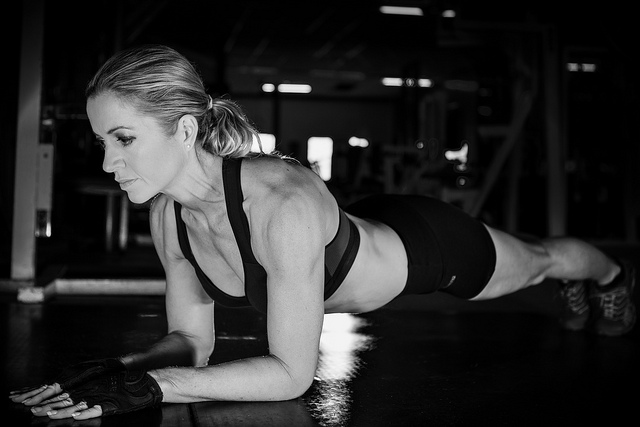
Planks are one of the best all-around core strengthening exercises. And everyone knows that the simplest way to make planks harder is to hold them for longer.
But increasing the duration of a plank is only one way to progress in this exercise. And while there are some unique benefits to holding a plank for a long time, the strength benefits are significantly diminished after 30-60 seconds or so.
Plus, holding a plank for minutes at a time can get boring, and isn’t always the best use of your training time.
So, here are 10 ways to make planks harder (and more interesting!):
1. Elevate your feet.
You can simply elevate your feet on a low step, bench or chair. Or, place them flat against a wall for an additional challenge (i.e. pressing into the wall with a mid-foot balance).
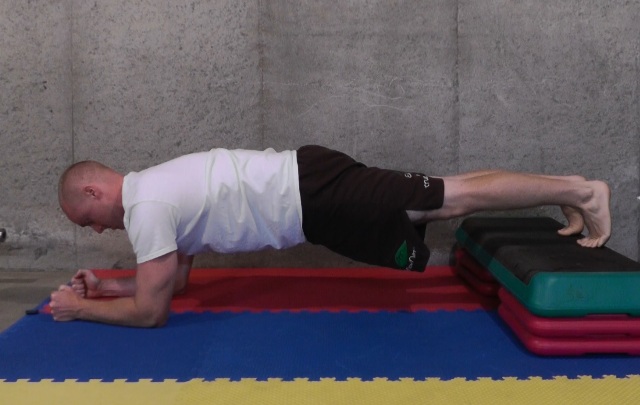
2. Increase the leverage challenge.
Slide your elbows forward or walk your feet back (e.g. like an RKC plank) to increase the leverage challenge. Try to hold a plank with your nose positioned directly between your elbows.
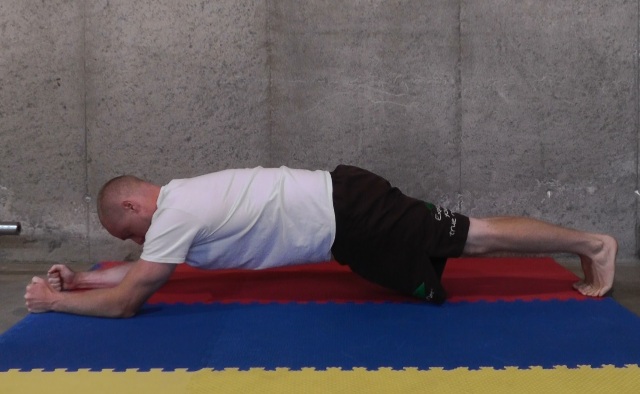
3. Focus on the squeeze.
Instead of just “balancing” for as long as you can manage, increase the intensity of your planks by focusing on the isometric contraction during your exhales. So, when you exhale, contract the entire corset of muscles around your core, draw your belly in toward your spine, squeeze your pelvic floor muscles, contract your glutes and thighs, and pack your shoulders down on your ribs. Hold this hard contraction throughout the duration of a slow exhale, and then relax during the inhale.
4. Add external resistance.
Simply put, add more weight. You can wear a weight vest or a backpack, put some free weights on your mid-back (e.g. barbell plates or a dumbbell), have a partner put some pressure on your back, or wrap a band around your shoulders or lower back.

5. Perform a moving plank.
But aren’t planks supposed to be static? Who says you can’t add a little movement to a difficult pose for strength and conditioning purposes?
You can perform a super-slow mountain climber (e.g. 15-30 seconds per repetition), a lateral pushup walk, the alligator crawl, or a bodysaw plank, among others.
Here’s an example of the Bodysaw, which is a fairly difficult plank exercise…
Or, step things up a notch and perform a ballistic plank…
6. Increase the stability challenge.
You can place your hands or feet on an exercise ball or a suspension trainer (e.g. rings, TRX, etc.). Or do both. The greater the challenge to maintain stability, the harder the exercise will be.
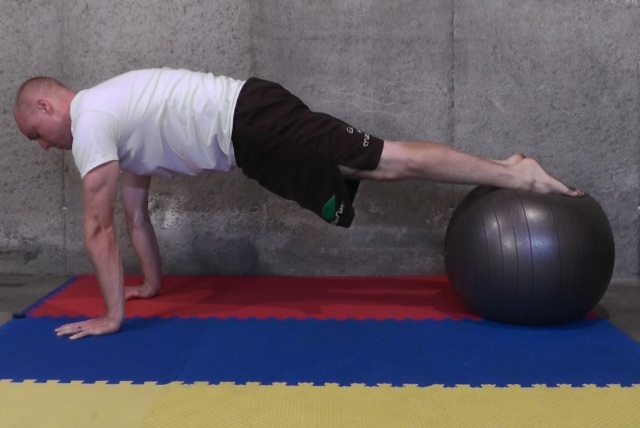
7. Decrease your base of support and/or raise your center of gravity.
You can raise your center of gravity by performing your planks with your arms straight (i.e. elbows locked) so that your torso is higher off the ground. You can also decrease your base of support (to increase the balance/stability challenge) by moving your hands, elbows, and/or feet closer together (or crossing one ankle over the other). Or, you could simply lift one or more limbs off the ground.
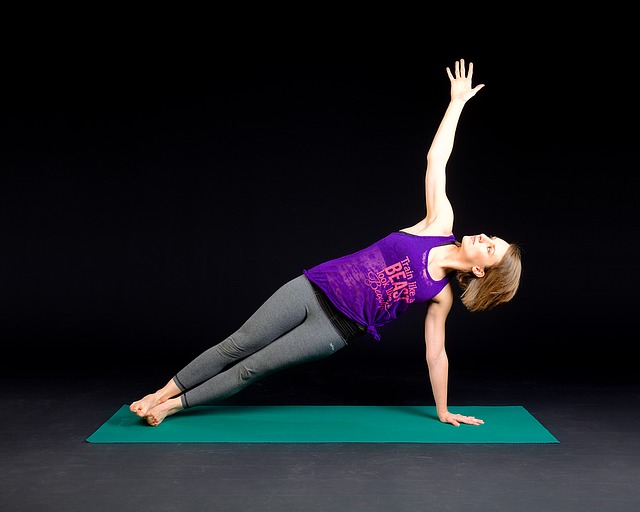
Speaking of which…
8. Lift a limb or two.
You can raise an arm or a leg off of the floor. Or, you can raise one of each (do opposites, e.g. right arm, left leg), which is known as the bird dog plank.

9. Add rotation with a twisting plank variation.
Who says planks have to always be in a neutral position? Loading the spine in non-neutral position is a controversial subject. And it should go without saying that if you have had back problems or recent injuries, that you should proceed with caution when it comes to adding resistance to positions that deviate from a neutral spine – especially involving rotation. I should also add that you’ll obviously need the requisite amount of mobility and stability at your spine to perform these safely. So, when in doubt, proceed with caution. That said, performed properly, a twisting plank can be a great way to strengthen your core in a new position and in different degrees of freedom.
Here are 5 twisting plank exercises…
Note: you can Click Here for more info on twisting planks.
10. Go longer with a non-stop circuit.
Instead of performing a plank, resting, and then performing another plank, try performing a plank circuit by switching to a new position whenever you get tired.
Here’s an example of a plank circuit, where I demonstrate twenty different plank exercises…
Tip: You can combine many of these strategies. For example, elevate your feet by placing them flat against a wall, slide your elbows forward (RKC plank), wear a light weight vest, and perform a slow and controlled mountain climber with a strong isometric contraction (i.e. squeeze!).
Final Words
Planks do your body good, and hard planks do your body best. So, challenge yourself with a few of these strategies the next time you train.
Here’s a video I filmed to demonstrate these plank progessions…
If you found this article helpful, please share it with your friends:
.jpg)
![]()
Health-First Fitness Coach
P.S. If you liked this post, then please signup for the newsletter, or follow me on Facebook or Twitter for daily updates and other interesting info.
P.P.S. One last tip: if you do a lot of plank training, make sure you’re also training your posterior chain with exercises like the shoulder bridge plank and other bridging exercises, and hip thrusts, among others.
P.P.P.S. Photo credit: 1, 2, 3.
Up for a Challenge?
Try out this advanced plank workout which incorporates several of the strategies mentioned above.
Note: you can Click Here for my free 30-day plank training program, which I created for all skill levels.
Related Posts
- The Right Way to do the Plank Exercise (Detailed How-To Tutorial)
- How to do a Plank: Proper Plank Form (Quick Tutorial)
- 30 Days to a 5 Minute Plank and Rock-Hard Abs (Complete Plank Training Program For All Skill Levels)
- The 5 Minute Plank For Core Strength, Stability, and Rock-Hard Abs (Plank Challenge)
- How to do the Side Plank Exercise for the Best Results
- Training Tips From The 3+ Hour Plank World Record Holder
- The Ballistic Plank Exercise for Rock-Hard Abs
- The Elbow Plank VS Pushup Position Plank
- 5 Twisting Plank Exercises You’ve Never Tried Before
- How Long to Hold a Plank
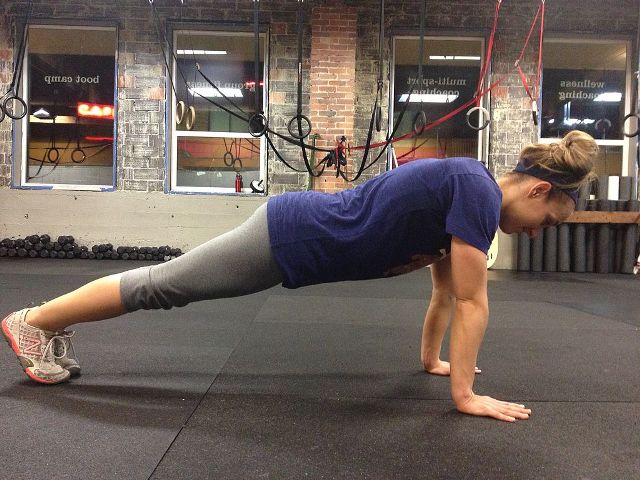
Just getting into planks. Enjoyed the videos
I want to lose weight. I do a lot in the gym and I run in the mornings.
But all this does not give me the desired result.
I want to ask how you feel about fat-loss drugs?
I find some shops like thepharmacom.com or steroids.com
Need your advice. Thank you.
Hi Kalvin, My advice is to stay far away from fat burners and other drugs meant to improve your body composition. If you’d like to know why, I’d direct you to one of my colleagues, Tom Venuto, who has covered this topic in much greater depth than I ever could (including the latest scientific research on the subject). I’d also recommend his book, too (Burn The Fat Feed The Muscle), particularly for your situation of seeing little results from your efforts.